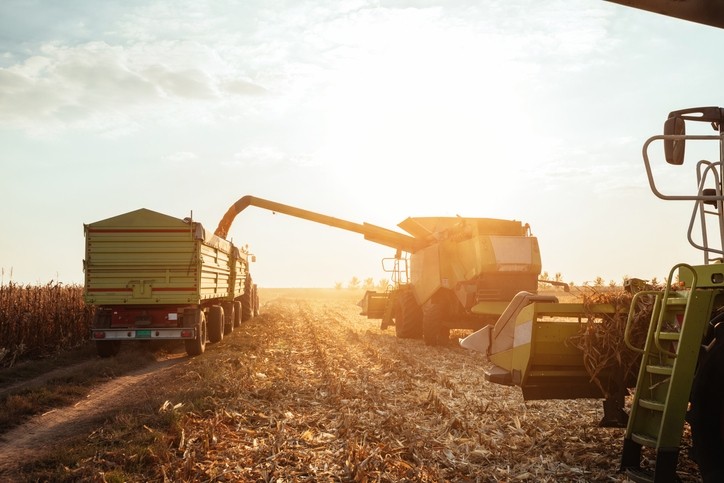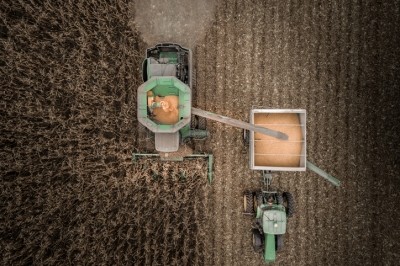Challenges for US crop data collection

The US Department of Agriculture (USDA) released details Friday [January 10] regarding the amount of feed grains in storage and on total crop production during 2019 in a series of reports.
The stocks report increased the amount of corn in storage on September 1 and included feed crop production on acres that had yet to be harvested by early December, but were expected to be gathered, the USDA said.
“The practice of including this production is standard NASS [National Agricultural Statistics Service] policy, however, there were more acres of corn and soybeans than normal still standing for harvest this year.”
Crop production evaluations also included a number of acres that had yet to be harvested for corn in Michigan, Minnesota, North Dakota, South Dakota and Wisconsin and for soybeans in Michigan, North Dakota and Wisconsin, the department said. States with unharvested acres are set to be re-contacted in the spring.
The USDA data presented included an unexpected increase in yield per acre for corn and soybeans, said Todd Hubbs, clinical assistant professor of agricultural commodity markets at the University of Illinois, during a Farmdoc webinar addressing data in both reports.
Total corn production across the US saw a decline from previous years, but some states – including Iowa, Illinois, Indiana and Ohio – saw a surprising increase in yield per acre.
There was also a large surprise regarding how much corn was accounted for in feed and residual use, said Scott Irwin, Laurence J. Norton Chair of Agricultural Marketing at the University of Illinois during a webinar covering both reports.
In the grain stocks report, along with establishing how much of the feed grain was in storage for December, USDA increased the amount of corn estimated to have been in storage in September.
“They revised the number that they printed in September for the first time in my memory,” he said. “We don’t know if that’s a new methodology they’re using or what prompted this, but at least for the last decade in the December stocks report they did not revise the previous September stocks number.”
Corn feed use surprise
The amount of corn in storage by December was smaller than had been anticipated, said Irwin.
“On the surface that’s bullish all by itself because the stocks turned out to be about 130m bushels less than expected,” he said.
However, combined with the adjustment in earlier storage amounts, there was about a 400m bushel usage surprise, he said.
“We’ve got more stocks, more production and lower Dec. 1 stocks we than expected – put that combination together and it implies a phenomenal rate of usage in the first quarter of the marketing year for corn,” he added.
The feed and residual use of corn during the September to December quarter was about 2.6bn bushels, Irwin said. The increase in corn use was one of the largest, bullish surprises in a December stocks report for the last 40 years.
However, there remain questions about how “believable” the result is, he said.
“It doesn’t seem like that it’s really feasible to have actually occurred, even though we’ve seen rising livestock inventories,” he said. “A jump of that magnitude seems too big to really be believed, at least entirely.”
Typically, the feed and residual use for corn in the first quarter of the year covers about 43% of the total feed and residual use for the year, Irwin said. If feeding 2.6bn bushels of corn accounts for 43% of what will be used for the 2019/20 market year it predicts total feed and residual use of 6.1bn bushels.
Currently, the USDA is forecasting total feed and residual use for corn during 2019/20 to be below 6bn bushels, he added.
Feed grain stocks details
Overall, the amount of corn in storage on December 1 was about 11.4bn bushels – a decline of 5% from levels in December 2018, the USDA said.
For the amount in storage, about 7.18bn bushels were stored on-farm – a drop of 4%, the department said. Corn managed off-farm was down 6% to 4.21bn bushels.
The amount of corn that disappeared from September to November 2019 was 4.52bn bushels, which was similar to the 4.54bn bushel disappearance reported for the same period the previous year, the department said.
Soybeans in storage on December 1 reached 3.25bn bushels, a decline of about 13% from the previous year, the USDA said.
The amount maintained on-farm fell 21% to 1.53bn bushels, while the amount kept off-farm dropped 5% to 1.73bn bushels, the department said.
Disappearance for the first quarter increased 8% to 1.22bn bushels, from what was recorded in 2018.
Wheat stores totaled about 1.83bn bushels, a decline of 9% from the previous year, the USDA said.
On-farm stocks grew by 3%, while the amount of the crop stored off-farm fell 13% from the previous year, the department said. Disappearance for the September to November period was 512m bushels, an increase of 35% from the same period in 2018.
About 249m bushels of sorghum were in storage as of December 1, a drop of 4% from 2018, the USDA said. Disappearance for the September to November period increased 11% from the previous year.
Similarly, both barley and oats saw a reduction in the amount of the feed crops that had been collected by December, the department said. Stored oats fell 20% from 2018, while stored barley fell 1%.
Feed grain production highlights
The production of corn for 2019 was estimated to be 13.7bn bushels, a drop of 5% from the revised 2018 prediction, the USDA said. Average yield was estimated at 168 bushels per acre, down from the 176.4 bushels an acre seen in 2018.
However, the area harvested for feed corn is expected to be 81.5m acres, an increase of almost 1% from the 2018 prediction, the department said.
Sorghum production for 2019 is set at 341m bushels, a decline of 6% from 2018, the department said. Planted acres in 2019 are considered to be a record low of 5.27m acres and area harvested dropped to 4.68m acres – a decline of 8% from the previous year.
Soybean production fell 20% from 2018 to a total of 3.56bn bushels, the USDA said. The average yield per acre declined about 3.2 bushels an acre to 47.4 bushels.
The area harvested saw a 14% reduction to be about 75m acres, the department added.












